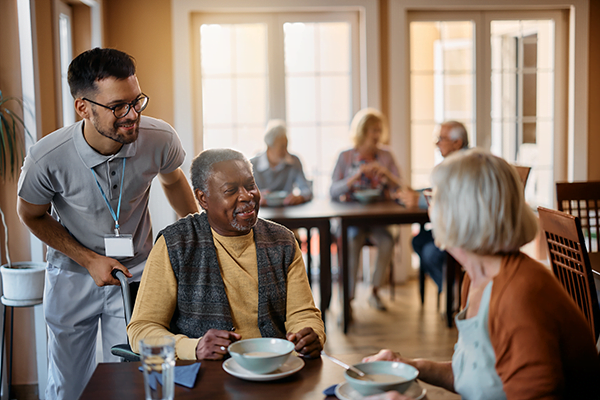
Family Care Demands Don’t Stop at Nursing Home Door
Anyone who thinks that moving an elderly parent out of her home and into a facility will eliminate the need for most of the care they’ve been providing should think again.
Two University of Pennsylvania researchers added up the hours that adult children, spouses and other unpaid caregivers provide when loved ones are in assisted living, nursing homes and other facilities. For example, informal caregivers put in only about a fourth of the hours at nursing homes that they would if their loved one were still living at home – that’s no doubt one reason for moving in the first place.
But they still do an awful lot. Informal caregivers spend an average of 37 hours per month helping someone who is in a nursing home. They put 65 hours into providing the gamut of care needs to loved ones in residential communities such as assisted living, group homes and continuing care communities, which attract healthier, more able retirees than nursing homes but provide fewer services.
The labor provided by the nation’s “invisible workforce” of informal caregivers is “nontrivial across all settings,” researchers Norma Coe and Rachel Werner concluded.
And their care burdens “do not end when a person transitions from the community to residential care or a nursing home setting,” they said.
The backup for this claim is a comparison of how many older Americans say they are getting help from family members while they are living at home versus in a facility. Regardless of the living situation, family and other informal caregivers play a major role in their care.
One type of assistance is helping older Americans with their self-care activities of daily living, or ADLs – in this case, eating, bathing, using the toilet and dressing. The researchers find that 15 percent of people who are living at home require this kind of help. In nursing homes, 80 percent do.
However, within the group of seniors who need help with ADLs, a majority in either setting still rely on their family and informal caregivers.
The findings are based on a survey of people over 50 who described the care they received while temporarily residing in a nursing home. This often occurs when an elderly person needs a place to continue recovering after being released from a hospital stay. Although the survey excludes permanent nursing home residents, it is still a gauge of the burden on informal caregivers in this setting.
The researchers found that informal caregivers provide some help with personal care ADLs for 76 percent of the people who need additional assistance, compared with 58 percent of the people who still live in their own homes. The same high levels of informal care are provided to nursing home residents who need help with another set of ADLs – walking and getting out of bed – and with independent activities of daily living, or IADLs, which include household tasks like grocery shopping and handling money.
Using a second survey of Medicare beneficiaries, the researchers were able to compare retired home dwellers with retirees in residential care communities like assisted living facilities, group homes, and continuing care communities. In this data, retirees who still live at home need only 16 hours a month of help. People usually move out of their homes and into a residential facility because they are losing some ability to care for themselves.
After a move, the hours of informal care quadruple. The bottom line for informal caregivers is similar: Medicare beneficiaries who need assistance and still live either in the community or in a residential facility rely on informal care, especially for household tasks.
The researchers say their findings raise a lot of questions, including whether inadequate staffing levels at facilities are partly behind the heavy burden on informal caregivers. This issue became apparent during COVID. Many residents became depressed or developed behavioral problems partly because family caregivers were not permitted to visit, robbing them of much of the care required to supplement the facility’s staff.
Other questions this study raises are: How are the needs of people who don’t have informal caregivers being met? Do staff members help these residents more to compensate for a lack of informal care, or are they going without the care they need?
Informal caregivers need more support from policymakers and the institutions where their family members reside. But first, their tireless efforts and long hours of providing unpaid care must be acknowledged. Perhaps this study will help.
Squared Away writer Kim Blanton invites you to follow us @SquaredAwayBC on X, formerly known as Twitter. To stay current on our blog, join our free email list. You’ll receive just one email each week – with links to the two new posts for that week – when you sign up here. This blog is supported by the Center for Retirement Research at Boston College.
Comments are closed.







Very good article.
It could be fun to “follow you”, although many of us older folks do not use X, formerly known as Twitter, or most of the modern methods people use to communicate.
There is data available through many of the companies that do marketing for the senior arena. I spent 22 years in that business.
I get the newsletter and appreciate your good work.
Thank you both for your comments! I also wanted to point out that readers who want to follow the blog can sign up for a weekly email of the articles for that week. We’d love to have you!
Here’s the link: https://crr.bc.edu/join-our-e-mail-list/